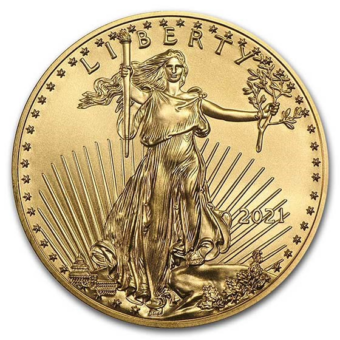The Gold Trail: A Daily Journey Through the Week's Market
Monday - 10.16.23: Gold and silver prices dropped, with December gold at $1,928.20 and December silver at $22.765 due to rising U.S. Treasury yields and corrections from last week's gains. U.S. stocks are set to open stronger. Tensions in the Middle East, with potential Israeli actions in the Gaza strip, keep market risks high. China's yuan faces pressure, causing capital to move to the U.S. dollar. The PBOC injected $108 billion liquidity into the banking system and kept a key rate unchanged. Evergrande's debt crisis caused a bank run in Hebei, but there's anticipation of state intervention.
Tuesday - 10.17.23: Gold and silver prices edged up to $1,936.30 and $22.845 respectively. Asian and European stocks rose, while U.S. stocks may open lower. Despite the ongoing Israeli-Hamas conflict, traders focus more on economic factors and central bank statements. However, the Middle East situation remains a significant market concern.
Wednesday -10.18.23: Gold and silver prices rose, hitting four and three-week highs respectively at $1,960.10 and $23.40. This surge is due to increased market risk aversion following a Gaza hospital bombing, killing over 500. The cause remains disputed between Israel and Hamas.
Thursday - 10.19.23: Gold and silver prices decreased to $1,962.30 and $23.01. There's profit-taking by futures traders but Middle East tensions provide support to the metals. Federal Reserve Chairman Jerome Powell is set to speak in New York. Rising bond yields and the ongoing Middle East conflict dampen equity markets, with recent reports of more missile launches and a devastating Gaza hospital explosion.
Friday- 10.20.23: Gold prices experienced a slight increase, nearing their daily peak, while silver observed a minor drop during midday U.S. trading on Thursday. This fluctuation comes after recent notable gains in the market. The ongoing Middle East crisis, marked by rising tensions and recent events, including a Gaza hospital explosion resulting in over 500 casualties attributed to Palestinian militants, has heightened risk aversion, supporting the stable value of these metals. Furthermore, the financial community is keenly awaiting Federal Reserve Chairman Jerome Powell's upcoming speech for insights on U.S. monetary policy amid rising bond yields.
Gold's Upward Trajectory Fueled by Oil and Geopolitics
In the wake of the latest conflict between Israel and Hamas, gold prices have surged, recording a gain of over $162 in just two weeks, reaching just below $1,978. Alongside this, oil prices have also seen significant increases, with WTI crude moving from $81 to over $89 per barrel and Brent crude jumping from $83 to $92. Analysts predict that gold will continue its ascent, potentially nearing the $2100 mark, driven by macroeconomic trends, geopolitical events, and the escalating oil prices. Some economists see the U.S.'s deteriorating economic indicators, such as rising inflation, and global uncertainties are creating an environment conducive to the growth of precious metals as safer havens. He further suggests that the close relationship between oil and gold will act as a supporting factor for the yellow metal in the foreseeable future.
Powell Addresses Economic Balance Amid Inflation Concerns
Federal Reserve Chairman Jerome Powell, during his speech to the Economic Club of New York, emphasized the importance of bringing inflation down sustainably towards the central bank's 2% goal. Despite acknowledging a deceleration in the inflation rate, Powell stressed that "inflation is still too high" and consistent positive data is crucial for confidence-building. While he did not hint at immediate rate hikes, he indicated that achieving the bank's inflation target might necessitate slower economic growth and some softening of the labor market. This statement comes after the Fed has raised interest rates 11 times since March 2022, amounting to an increase of 5.25 percentage points.
Housing Blues Drag Gold Down Too
Amidst the shadows of a pandemic-ravaged 2020, the U.S. housing market is showcasing worrying signs with existing home sales sinking to the gloomiest numbers since June 2020, having nosedived by 2% last month. The sales stand at an adjusted rate of 3.96 million units, surprisingly a tad better than market anticipations. The domino effect was seen on gold, which didn't shine any brighter despite the bleak housing data, witnessing its own technical selling pressures. Mortgage rates, which are the highest since the 2000s, along with a dearth of housing inventory, continue to stifle potential buyers. Even though home prices have inched up, the overall sentiment echoes a clarion call for more housing stock, as voiced by NAR Chief Economist, Lawrence Yun.
Why Silver May Eclipse Gold in 2024
In the backdrop of the London Bullion Market Association's 2023 Global Precious Metals Conference, both gold and silver remain in focus, as the former continues to be buttressed by geopolitical uncertainties and the latter by its industrial demand. While the Federal Reserve's aggressive interest rate hikes have impacted both metals, silver has managed to sustain significant gains, increasing from around $18.60 to a current value of about $23 per ounce. This surge in silver can be attributed to its growing demand in the solar sector, especially in Photovoltaic (PV) solar panels. The conference's sentiment leaned towards a bullish outlook for silver in the coming year, expecting it to trade around $26.80 an ounce. Gold, on the other hand, remains influenced by ongoing global tensions, such as the conflict in the Middle East, but has also seen an upward trajectory in its price, supported in part by high demand from central banks. The conference anticipates gold prices to reach about $1,990.30 an ounce by next year, a solid increase from its previous price of $1,650 an ounce in 2022.
Foreclosure Rates Climb Amid Economic Challenges
Home foreclosures are witnessing an upward trend, with a 34% increase from the previous year, as many Americans face a cost-of-living crisis. A study by real estate data provider ATTOM reported a 28% surge in foreclosure filings in the third quarter, totaling 124,539. Despite the national economy's improvement and stable job market, many homeowners are still dealing with the economic repercussions of the pandemic. Foreclosure starts are now comparable to the numbers seen two years ago, before the pandemic-related moratorium. Further complicating matters, the conclusion of the pause on federal student loan payments could negatively impact the housing market. A poll by Pulsenomics revealed that a majority of economists believe homeownership rates might be adversely affected for a year or more due to resumed student loan payments, with some predicting a longer impact.
Geopolitical Crisis and Monetary Policy Push Gold Near $2,000 Mark
Gold has reached its highest level since early August, driven by a combination of factors. The Federal Reserve's restrictive monetary policy, which involves significant interest rate hikes and reduced money supply, has put pressure on gold prices, leading to increased volatility. Market participants anticipate the end of the rate hike cycle, potentially bolstering gold's value. Additionally, geopolitical tensions have escalated with the ongoing conflict between Russia and Ukraine and a surprise attack in the Gaza Strip, causing considerable civilian and military casualties. These global crises have amplified gold's appeal as a safe-haven asset. As of October 9, the price of gold was approximately $1830, and it has now neared the $2,000 per ounce mark. Although the prospect of gold achieving record highs is appealing to many, it's underscored by the tragic events driving its ascent.
U.S. Central Bank Questions Need for Digital Currency
U.S. Federal Reserve Governor Michelle Bowman expressed skepticism about the necessity of a Central Bank Digital Currency (CBDC) for the U.S. during a discussion at Harvard Law School. Bowman highlighted the potential risks and tradeoffs associated with a U.S. CBDC, emphasizing that its benefits remain ambiguous. She underscored that existing systems like the FedNow Service, a real-time interbank payment system, can address the needs often cited for a CBDC more efficiently. While noting the rise of stablecoins as an alternative payment mode, she stressed the importance of robust regulation. Bowman cautioned against innovation that could disrupt the current banking system, emphasizing that policy must be carefully balanced with technological advancements. She advocates for a regulatory framework that supports responsible innovation and ensures that emerging solutions meet the same standards as traditional banking structures.
Unprecedented Money Supply Contraction Signifies Economic Woes
The money supply has seen an alarming contraction, experiencing its steepest decline in decades. For ten consecutive months, growth in the money supply has been in the negative, reaching a dip of 10.8% year-over-year as of August 2023. This decline parallels levels not observed since the Great Depression era. Notably, the money supply's downturn is indicative of larger economic concerns; historical data often links rapid contractions in the money supply with incoming recessions. These unprecedented decreases follow a period where nearly two-thirds of the total existing money supply was created in just the past thirteen years. This contraction has also led to tightened credit, with indicators such as the Philadelphia Fed's manufacturing index suggesting a looming recession. Additionally, as the Federal Reserve increases interest rates, the cost of borrowing rises, impacting businesses and consumers alike.
BRICS' Expansion Attracts Over 40 New Membership Requests
After expanding its membership from the initial five countries (Brazil, Russia, India, China, and South Africa) to 11 by inviting nations like Saudi Arabia, Iran, UAE, Argentina, Ethiopia, and Egypt, the BRICS economic bloc now sees over 40 countries expressing interest in joining at the 2024 summit set to be hosted in Russia's Kazan region. Although nations such as Indonesia and Venezuela previously declined inclusion, they, along with many others, are gearing up to apply for membership. This surge in interest reflects the perceived benefits and cooperative potential within the expanded BRICS alliance.
Next Week’s Key Events
Monday, Oct. 23:
- There are no scheduled economic reports.
Tuesday, Oct. 24:
- At 9:00 am, the S&P Case-Shiller Home Price Index for 20 cities for August will be released.
- At 9:45 am, the S&P flash U.S. Services PMI for October is due.
- Also at 9:45 am, we can expect the S&P flash U.S. Manufacturing PMI for October.
Wednesday, Oct. 25:
- At 10:00 am, the New Home Sales report for September will be presented.
Thursday, Oct. 26:
A busy morning at 8:30 am will have three reports:
- The GDP for the third quarter,
- The Initial Jobless Claims for the week ending October 21, and
- The Durable Goods Orders for September.
- Then at 10:00 am, the Pending Home Sales report will be unveiled.
Friday, Oct. 27:
- The day starts at 8:30 am with the release of the PCE index for September.
- At 10:00 am, the Consumer Sentiment report for October will be made available.
HOW THESE REPORTS MIGHT IMPACT THE GOLD AND SILVER MARKETS
S&P Case-Shiller Home Price Index: A robust housing market can indicate a strong economy, which could bolster the U.S. dollar and potentially pressure gold and silver prices downward.
S&P flash U.S. Services PMI and Manufacturing PMI: PMI numbers reflect the health of the manufacturing and services sectors. High PMI readings signal economic strength, which might weaken gold as a safe-haven asset but boost silver due to its industrial uses.
New Home Sales: Like the Home Price Index, strong new home sales can point to a robust economy, potentially weakening gold prices. But if the housing market is weak, investors might flock to gold as a safe haven.
GDP: The Gross Domestic Product measures the total value of goods and services produced over a specific time period. Strong GDP growth can lead to a stronger dollar and lower gold prices, while a weak GDP might boost gold as a safe-haven asset.
Initial Jobless Claims: Higher jobless claims can indicate economic softness, potentially boosting gold prices as a safe-haven asset.
Durable Goods Orders: An increase in orders might suggest economic strength and, therefore, potentially weaken gold prices. Conversely, a decline might bolster gold prices.
Pending Home Sales: As with other housing metrics, robust figures might pressure gold prices down, while weak figures could support them.
Personal Consumption and Expernditures (PCE) Price Index: This is an inflation indicator. Rising inflation can be bullish for gold, as investors seek gold as an inflation hedge. Stable or declining inflation could weaken gold's appeal.
Consumer Sentiment: High consumer sentiment might indicate economic optimism, potentially pressuring gold and silver prices downward. A decline in sentiment, indicating pessimism, could support gold as a safe-haven.






















